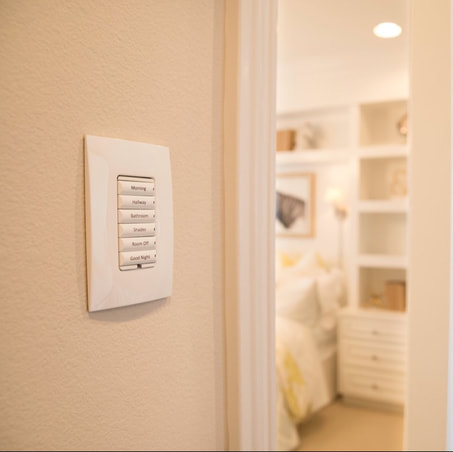High voltage lighting was designed for power hungry incandescent bulbs, so why are we using it on bulbs that use 1/10th of the power? Whole home low voltage lighting is more efficient, runs cooler, lasts longer, dims better, flickers less, and reduces wall clutter.
Simple ControlThe lighting in each room can be controlled using the rooms keypad, phone or motion sensor. Additionally, the system is ready for voice control using Amazon Alexa or Apple's Siri.
No Wall ClutterAll of the low voltage dimming is done in a lighting control panel, hidden away in a closet or the attic. There is no longer a need to have multiple banks of switches or dimmers in each room.
Better Light QualityLEDs want constant current with variable voltage. When they are given this type of power, they dim on their full spectrum smoothly and without flicker. With our low voltage lighting system, we give them this type of power and remove the heat causing electronics from the bulb, allowing them to run cooler and with higher light output.
|
The Problem with High Voltage on LED
LEDs do not connect to 120v high voltage power directly as this amount of power and current would destroy the LED instantaneously. The LEDs need a low voltage with constant current to operate correctly. For this reason, electronics are put into the high voltage bulbs to change the 120v high voltage to a low voltage constant current that the LEDs can use. There are two problems with this approach.
- High voltage LED lamps, if they can dim at all, use even more circuitry to adapt the dimmed high voltage into something that the LEDs can operate with, but dimming this way reduces the dimming range of the LEDs, causes electrical noise, requires matching the dimmer and the LED bulbs, and reduces the quality of the light output via flicker and light output stability.
- These extra electronics in the bulbs are a major source of heat. This heat reduces the light output from the LEDs and shortens their lifespan.


